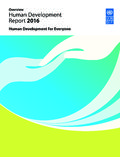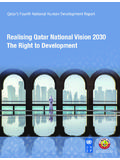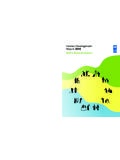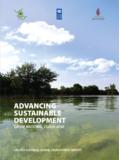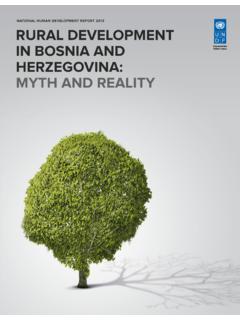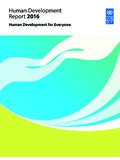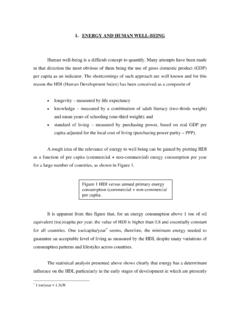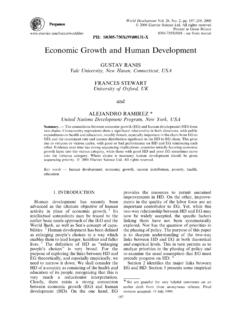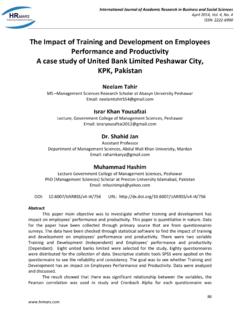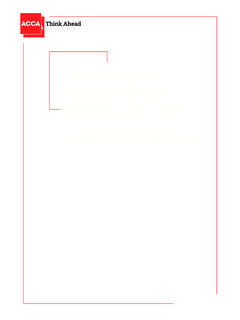Transcription of Pakistan - Human Development
1 Human Development Indices and Indicators: 2018 Statistical Update Briefing note for countries on the 2018 Statistical Update Pakistan Introduction This briefing note is organized into ten sections. The first section presents information on the country coverage and methodology of the 2018 Statistical Update. The next five sections provide information about key indicators of Human Development including the Human Development Index (HDI), the Inequality-adjusted Human Development Index (IHDI), the Gender Development Index (GDI), the Gender Inequality Index (GII) and a section with five dashboards. This Statistical Update does not contain the Multidimensional Poverty Index (MPI). This year, the MPI was computed using the methodology jointly revised by the Oxford Poverty and Human Development Initiative (OPHI) and the Human Development Report Office (HDRO) and it will be available in due course.
2 It is important to note that national and international data can differ because international agencies standardize national data to allow comparability across countries and in some cases may not have access to the most recent national data. Country coverage and the methodology of the 2018 Statistical Update The 2018 Statistical Update presents the 2017 HDI (values and ranks) for 189 countries and UN-recognized territories, along with the IHDI for 151 countries, the GDI for 164 countries, and the GII for 160 countries. It is misleading to compare values and rankings with those of previously published reports, because of revisions and updates of the underlying data and adjustments to goalposts. Readers are advised to assess progress in HDI values by referring to table 2 ( Human Development Index Trends ) in the 2018 Statistical Update.
3 Table 2 is based on consistent indicators, methodology and time-series data and, thus, shows real changes in values and ranks over time, reflecting the actual progress countries have made. Small changes in values should be interpreted with caution as they may not be statistically significant due to sampling variation. Generally speaking, changes at the level of the third decimal place in any of the composite indices are considered insignificant. Unless otherwise specified in the source, tables use data available to HDRO as of 15 July 2018. All indices and indicators, along with technical notes on the calculation of composite indices, and additional source information are available online at For further details on how each index is calculated please refer to Technical Notes 1-5 and the associated background papers available on the Human Development Report website: Human Development Index (HDI) The HDI is a summary measure for assessing long-term progress in three basic dimensions of Human Development : a long and healthy life, access to knowledge and a decent standard of living.
4 A long and healthy life is measured by life expectancy. Knowledge level is measured by mean years of education among the adult population, which is the average number of years of education received in a life-time by people aged 25 years and older; and access to learning and knowledge by expected years of schooling for children of school-entry age, which is the total number of years of schooling a child of school-entry age can expect to receive if prevailing patterns of age-specific enrolment rates stay the same throughout the child's life. Standard of living is measured by Gross National Income (GNI) per capita expressed in constant 2011 international dollars converted using purchasing power parity (PPP) conversion rates. For more details see Technical Note 1. To ensure as much cross-country comparability as possible, the HDI is based primarily on international data from the United Nations Population Division (the life expectancy data), the United Nations Educational, Scientific and Cultural Organization Institute for Statistics (the mean years of schooling and expected years of schooling data) and the World Bank (the GNI per capita data).
5 As stated in the introduction, the HDI values and ranks in this Statistical Update are not comparable to those in past reports because of a number of revisions to the component indicators. To allow for assessment of progress in HDIs, the 2018 Statistical Update includes recalculated HDIs from 1990 to 2017 using consistent series of data. Pakistan s HDI value and rank Pakistan s HDI value for 2017 is which put the country in the medium Human Development category positioning it at 150 out of 189 countries and territories. Between 1990 and 2017, Pakistan s HDI value increased from to , an increase of percent. Table A reviews Pakistan s progress in each of the HDI indicators. Between 1990 and 2017, Pakistan s life expectancy at birth increased by years, mean years of schooling increased by years and expected years of schooling increased by years.
6 Pakistan s GNI per capita increased by about percent between 1990 and 2017. Table A: Pakistan s HDI trends based on consistent time series data and new goalposts Life expectancy at birth Expected years of schooling Mean years of schooling GNI per capita (2011 PPP$) HDI value 1990 3,195 1995 3,387 2000 3,451 2005 4,101 2010 4,447 2015 4,978 2016 5,155 2017 5,311 Figure 1 below shows the contribution of each component index to Pakistan s HDI since 1990. Figure 1: Trends in Pakistan s HDI component indices 1990-2017 Assessing progress relative to other countries The Human Development progress, as measured by the HDI, can usefully be compared to other countries. For instance, during the period between 1990 and 2017 Pakistan , Bangladesh and India experienced different degrees of progress toward increasing their HDIs (see figure 2).
7 Figure 2: HDI trends for Pakistan , Bangladesh and India, 1990-2017 Pakistan s 2017 HDI of is below the average of for countries in the medium Human Development group and below the average of for countries in South Asia. From South Asia, countries which are close to Pakistan in 2017 HDI rank and to some extent in population size are Bangladesh and India, which have HDIs ranked 136 and 130 respectively (see table B). Table B: Pakistan s HDI and component indicators for 2017 relative to selected countries and groups HDI value HDI rank Life expectancy at birth Expected years of schooling Mean years of schooling GNI per capita (PPP US$) Pakistan 150 5,311 Bangladesh 136 3,677 India 130 6,353 South Asia 6,473 Medium HDI 6,849 Inequality-adjusted HDI (IHDI) The HDI is an average measure of basic Human Development achievements in a country.
8 Like all averages, the HDI masks inequality in the distribution of Human Development across the population at the country level. The 2010 HDR introduced the IHDI, which takes into account inequality in all three dimensions of the HDI by discounting each dimension s average value according to its level of inequality. The IHDI is basically the HDI discounted for inequalities. The loss in Human Development due to inequality is given by the difference between the HDI and the IHDI, and can be expressed as a percentage. As the inequality in a country increases, the loss in Human Development also increases. We also present the coefficient of Human inequality as a direct measure of inequality which is an unweighted average of inequalities in three dimensions. The IHDI is calculated for 151 countries. For more details see Technical Note 2.
9 Pakistan s HDI for 2017 is However, when the value is discounted for inequality, the HDI falls to , a loss of percent due to inequality in the distribution of the HDI dimension indices. Bangladesh and India show losses due to inequality of percent and percent respectively. The average loss due to inequality for medium HDI countries is percent and for South Asia it is percent. The Human inequality coefficient for Pakistan is equal to percent. Table C: Pakistan s IHDI for 2017 relative to selected countries and groups IHDI value Overall loss (%) Human inequality coefficient (%) Inequality in life expectancy at birth (%) Inequality in education (%) Inequality in income (%) Pakistan Bangladesh India South Asia Medium HDI Gender Development Index (GDI) In the 2014 HDR, HDRO introduced a new measure, the GDI, based on the sex-disaggregated Human Development Index, defined as a ratio of the female to the male HDI.
10 The GDI measures gender inequalities in achievement in three basic dimensions of Human Development : health (measured by female and male life expectancy at birth), education (measured by female and male expected years of schooling for children and mean years for adults aged 25 years and older); and command over economic resources (measured by female and male estimated GNI per capita). For details on how the index is constructed refer to Technical Note 3. Country groups are based on absolute deviation from gender parity in HDI. This means that the grouping takes into consideration inequality in favour of men or women equally. The GDI is calculated for 164 countries. The 2017 female HDI value for Pakistan is in contrast with for males, resulting in a GDI value of , placing it into Group 5. In comparison, GDI values for Bangladesh and India are and respectively (see Table D).
